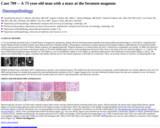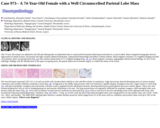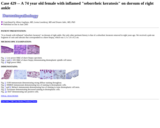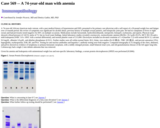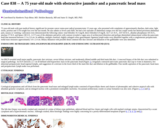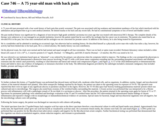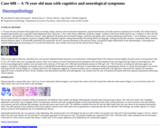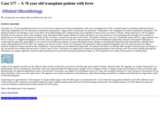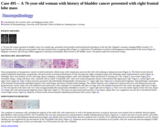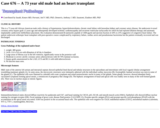
(This case study was added to OER Commons as one of a batch of over 700. It has relevant information which may include medical imagery, lab results, and history where relevant. A link to the final diagnosis can be found at the end of the case study for review. The first paragraph of the case study -- typically, but not always the clinical presentation -- is provided below.)
This is a 73 year-old African-American male with a history of hypertension, hypercholesterolemia, chronic renal failure with horseshoe kidney and coronary artery disease. He underwent 4-vessel coronary artery bypass graft 12 years ago and subsequently developed ischemic cardiomyopathy and recurrent ventricular tachycardia for which he had repeated ablation therapy and automatic implantable cardioverter defibrillator placement. His evaluation demonstrated B-natriuretic peptide of 1600 pg/ml and ejection fraction of 20% to 25% suggestive of congestive heart failure. The patient underwent orthotopic heart transplant with post-operative course complicated by respiratory failure, cardiac arrest and pseudomonas bacteremia but the patient eventually recovered and was discharged.
- Subject:
- Applied Science
- Education
- Health, Medicine and Nursing
- Life Science
- Material Type:
- Case Study
- Diagram/Illustration
- Provider:
- University of Pittsburgh School of Medicine
- Provider Set:
- Department of Pathology
- Author:
- Anil V.
- Anthony J.
- Demetris
- Eizaburo
- Parwani
- Sasaki
- Sasatomi
- Date Added:
- 08/01/2022
